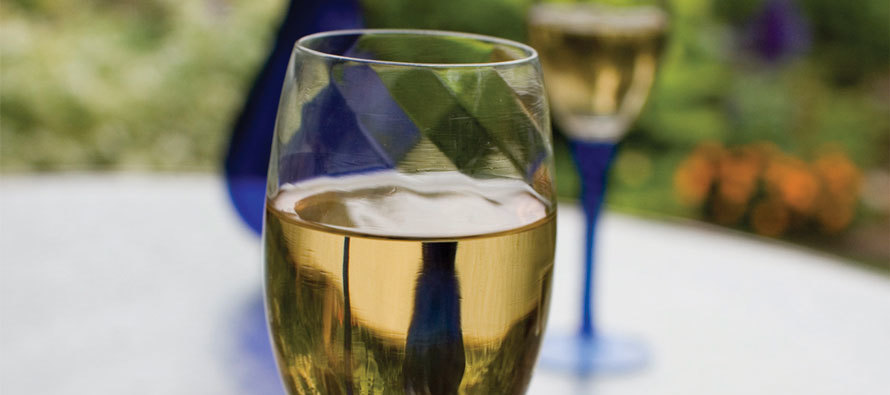Matching Wine with Food

Time and time again, I hear the erroneous statement “It doesn’t make any difference what wine you match to food. Drink the wine that you like.” Would you put mustard on ice cream or maple syrup on raw oysters? Would you wear argyle socks with an evening gown or wear a Kansas State sweatshirt to a Nebraska football game? Would you drink Barolo with oysters, or Zinfandel with sushi?
Of course you wouldn’t. Disparate combinations affront our senses by their lack of symmetry. They have a disjointed feel that attacks our sense of artistry. In contradistinction, items that match and complement each other become pleasing to the senses; they become hedonistic; they become artistic. Isn’t it logical that certain foods will have an affinity to specific wine styles?
If the pleasure of wine equals one unit and the pleasure of food equals one unit, the idea is to make the union of wine with food equal to a pleasure of three or more units. In a successful match, the whole should always be greater than the sum of its parts. Unfortunately, in many cases, the whole is less than the sum of its parts. For example, a big, heavy, tannic wine, such as Barolo would pulverize and completely blot out the flavors in a delicately flavored dish such as raw oysters on the half shell.
Why is it that Chablis goes so well with oysters and Cabernet Sauvignon makes a great match with filet mignon? The reason is quite simple. The elements of the wine interdigitate with and reinforce the elements in the dish and thereby fortify flavor and establish balance.
The following tips will guide you in the process of successfully matching wine with food.
- Tart wines like will generally make the best match to foods. Always keep the tartness in the wine greater than or equal to that in the food.
- Sweet foods like to find sweetness in the accompanying wine.
- Tannins suppress flavor; therefore, only serve tannic wines with robust, flavorful dishes.
- Acids and tannins lighten the weights of heavy ponderous dishes. Cloyingly rich and big, full-bodied meals go best with tart or tannic wines.
- Match the flavors in the dish to those in the wine. Dishes seasoned with white wine flavors (apples, citrus, tropical fruits, etc.) should be served with white wines; those with red wine flavors (cherries, berries, currants, etc.) with red wines.
- Complement the flavor in the wine to those in the dish. For example, we know that pepper blends well with steak (as in pepper steak). Therefore the peppery flavors so often found in Rhone reds or Zinfandel will, in similar fashion, complement steak.
- Always try to match the weight of the wine to that of the food. Heavyweight wines should always be restricted to full-bodied dishes. Lightweight wines are more versatile; they can be matched to any dish.
- Salty foods call for tart wines.
- Always try to match the ethnicity of the food to that of the wine. Although Zinfandel may pair perfectly well with spaghetti and meatballs, Barbara d’Asti would be a better choice. The eye sees the label!
- Consider the ambiance. An inexpensive Australian Shiraz will successfully pair with steak at a picnic; however, that same steak at a formal dinner party will do much better with the likes of a quality California Cabernet or good Bordeaux.
I have always found it amusing that this county’s two favorite wines – California
Cabernet Sauvignon and Chardonnay – take first billing on the menus of most restaurants. The fact is that they have limited application in wine-food parings.
California Cabernet Sauvignon, a big, rich, full-bodied wine, is only useful in pairing to heavyweight dishes. Sure, it’s great if you are eating at a Chophouse, but for the ordinary restaurant, its use in matching with food is rather limited.
Chardonnay, a big, rich, and often low-acid wine can make wine-food pairings cloyingly rich or ponderously heavy. The union of big, rich wines to big rich food without the relief of substantial acidity in the wine is often simply too much.
If I were limited to four wines to use in wine-food pairings, I would select Champagne, Sauvignon Blanc, Pinot Noir, and German sweet styled Riesling. These are versatile wines that will match to a wide variety of foods. Isn’t it odd that they take a more minor role on the wine menu of most restaurants? If you are in doubt as to what wine to use for a particular dish, one of these wines will likely fit.

John Fischer
Dr. John Fischer is a member and two-time president of the Omaha Branch of the International Wine & Food Society, past director of the Nebraska chapter of LADV, and the founding member of the Council Bluffs Branch of the International Wine & Food Society. He teaches a course on matching wine with food at the Institute for the Culinary Arts in Omaha and is the author of the books, “The Evaluation of Wine – A Comprehensive Guide to the Art of Wine Tasting” and “Wine and Food – 101.”
No comments
Write a commentOnly registered users can comment.











